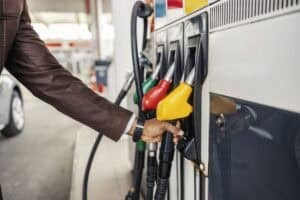The myTank app is all about being clever at the pumps. Here's how:

The drastic monthly changes in South Africa’s fuel prices left a mark in 2022 many consumers are eager to forget.
A year in which the price of petrol and diesel reached record figures above R26 per litre in some instances, the flip-flopping nature of the increases and comparatively smaller decreases resulted in not only strained monthly petrol bills, but also higher food prices and less spending over the festive season for some.
Fuel prices skyrocketing
Despite the Department of Mineral Resources and Energy announcing a welcome reprieve for January with respective decreases of R2.06 per litre for petrol and between R2.08 and R2.68 per litre for diesel, the majority of South Africans are still reeling and looking for every possible opportunity to reduce fuel bills by even the slightest.
Given the state of the country’s public transporter sector and the price of ride-hailing services, the greater percentage of the population still relies on their own transport to get around, which has the knock-off effect of costing more in fuel.
What is myTank?
This, together with the often confusing explanation of many fuel stations’ rewards programmes, promoted the creation of a new smartphone app its inventor claims “helps users find the best value when filling up their cars”.
WATCH: Find the best fuel prices
Available since the latter stage of last year, the myTank app has been rising in popularity with claimed downloads so far of 50 000 and unique 200 000 location searches.
ALSO READ: Fuel price figures confirmed by department a positive start to 2023
Freely downloadable for Android devices with an Apple version not yet available, the app not only calculates the true cost of driving to each fuel station registered, but also the exact nature of each facility’s loyalty programmes, their amenities such as restaurants, actual pump prices, ATMs and even load-shedding schedules, plus the ability to provide an accurate readout on how much it will cost to fill up based on the tank sizes and fuel type of vehicles.
Citing the detailed explanation of the various stations’ rewards programmes as one of the key successes of the app, creator Rob Gardner said the inherent success lies with the app’s ability to “do the thinking while telling you where to go” for the best prices.
“MyTank was created to bring this all together, along with info on what each fuel station has on-site like restaurants, play areas etc. I wanted to ultimately create something that could allow people to genuinely save money and take the guesswork out of where to fill up and to give at least some form of value / saving to everyone who uses the app,” Gardner told The Citizen.
“The principle of the app is to provide value to all users, whether that be through finding the best rewards program, better diesel prices or finding the facilities they are looking for on a road trip”.
Benefits and challenges
Speaking of the app’s benefits to the user and indeed the station, Gardner says, “With myTank, the fuel stations can take control of their listing if they want to display their price, amenities and display their promotions etc whereas some other similar apps rely on crowdsourced data.
“There are pros and cons to both approaches – ultimately I feel that a smaller, curated set of results controlled by site owners who know they are offering good value provides a better result than thousands of potentially inaccurate and unverified prices and details”.

Despite admitting challenges have prevailed with convincing some of the bigger oil companies to list themselves on the app, Gardner stated that the response from smaller firms has been the complete opposite, with the same applying to independent retailers.
“In terms of the fuel stations, there has been really positive response and we have a few deals in the pipeline that will bring on loads more. I am working actively at getting all fuel brands on board to provide as much value as possible to the user,” Gardner added.
Accurate from the off
He also alleviated fears about inherent fears of the app’s accuracy, saying the various prices and loyalty programmes originate directly from the listed petrol station or retailer.
“I wanted to rather have a smaller but accurate set of results than a potentially bigger set of user-updated prices which aren’t controlled and can easily be incorrect,” he said.

“Initially the app was populated with some crowdsourced prices just to get a bit of useful data. Now with more and more fuel stations joining, the listings differentiate clearly between prices that have been updated and those that are out of date”.
He adds that “ultimately the app will serve users the best if the better value sites join – many consumers aren’t aware of these smaller brands and they typically offer huge savings on diesel”.
How to get it?
myTank is compatible with Android devices and be downloaded from the Google Play Store or run directly from the browser for users using Apple devices.






